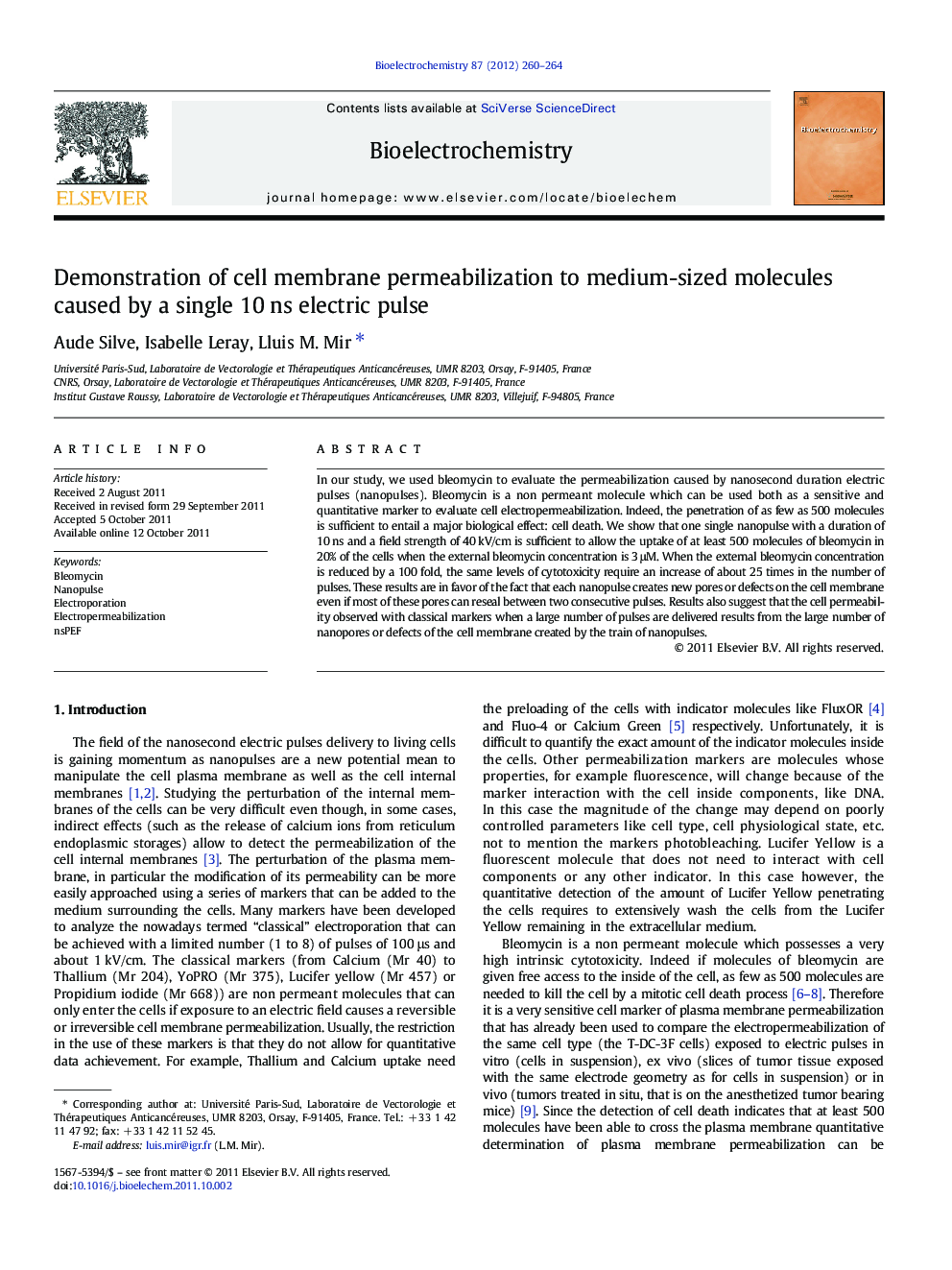| Article ID | Journal | Published Year | Pages | File Type |
|---|---|---|---|---|
| 1274465 | Bioelectrochemistry | 2012 | 5 Pages |
In our study, we used bleomycin to evaluate the permeabilization caused by nanosecond duration electric pulses (nanopulses). Bleomycin is a non permeant molecule which can be used both as a sensitive and quantitative marker to evaluate cell electropermeabilization. Indeed, the penetration of as few as 500 molecules is sufficient to entail a major biological effect: cell death. We show that one single nanopulse with a duration of 10 ns and a field strength of 40 kV/cm is sufficient to allow the uptake of at least 500 molecules of bleomycin in 20% of the cells when the external bleomycin concentration is 3 μM. When the external bleomycin concentration is reduced by a 100 fold, the same levels of cytotoxicity require an increase of about 25 times in the number of pulses. These results are in favor of the fact that each nanopulse creates new pores or defects on the cell membrane even if most of these pores can reseal between two consecutive pulses. Results also suggest that the cell permeability observed with classical markers when a large number of pulses are delivered results from the large number of nanopores or defects of the cell membrane created by the train of nanopulses.
► Bleomycin (Mr 1500) is a very sensitive cell permeabilization marker. ► Pulses of field strength E = 40 kV/cm and duration 10 ns induce permeabilization. ► One pulse is sufficient for cross-membrane transport of bleomycin. ►These pulses allow thus the penetration of molecules of 1500 Da. ► Each pulse creates new pores or defects on the cell membrane.
